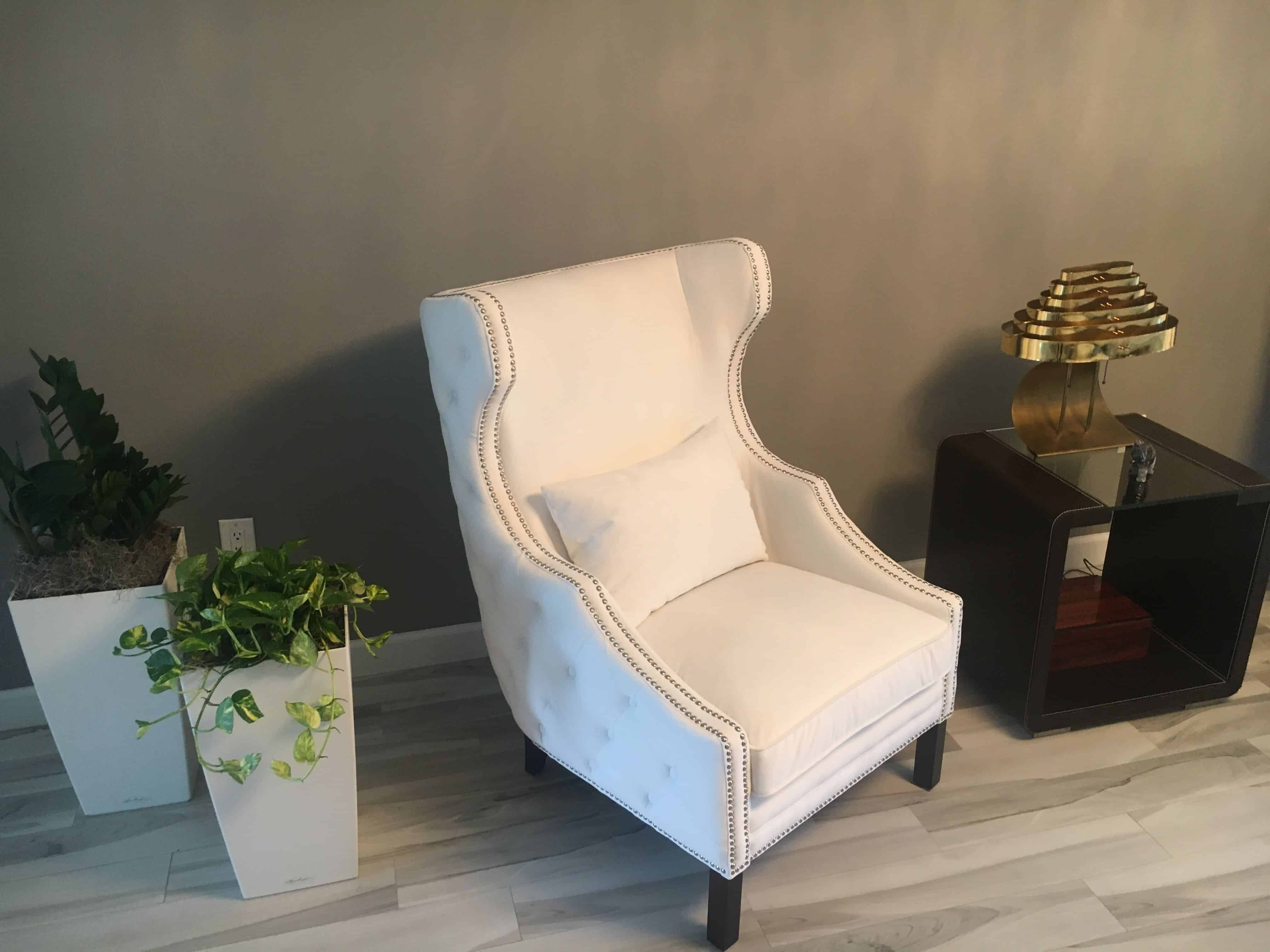Along with lavender essential oil and breathable sheets, adding a houseplant or two to your bedroom can go a long way to creating a serene scene. Not only do plants bring a fresh, vivid look to your decor, but they’ve been proven to filter common household toxins from the air, too. Everything from curtains to upholstery to mattresses can be guilty of off-gassing, or releasing the chemicals used to make them into your space. Other sources of pollutants include dry-cleaning or cleaning products, in which nasty toxins like formaldehyde, benzene, xylene, and TCE can lurk. Plants are able to absorb these pollutants, with even the microorganisms in their soil playing a role in cleansing the air.
So how many plants should you have in your bedroom, and which ones should you get? Experts say 2 good-sized plants per 100 square feet of interior space should do the trick. We’ve rounded up our Top 5 bedroom plants below. What do they have in common? They’re all the right scale and fairly low-maintenance, able to tolerate low light and notable for their ability to help recycle your air.
ONE: Pothos
We love a Pothos for its glossy, heart-shaped leaves and ivy-like effect (you can even hang it up to encourage the spill of leaves). This plant is enduring and hardy, flourishing in even a darker spot and requiring little maintenance. NASA’s Clean Air Study singled out the Pothos as one of the best air cleaners. Give it a little sun and a little water, and you’ll be good to go.

TWO: Fiddle Leaf Fig
This fiddle leaf fig has all the appeal of a tree, and since the larger the plant the more effective it can be in reducing pollutants, the fig is a great choice for the bedroom. It’s also totally on trend, appearing in the coolest, most modern homes you’ll see featured on Instagram and Pinterest. It requires some filtered light and moderate watering, but the easy maintenance is worth having this health-giving design piece in your bedroom.
THREE: Peace Lily
It’s all in the name. NASA loves this plant for its ability to increase the moisture in a room, making it an exceptional choice for allergy sufferers. Water it once a week and keep it in a shady spot; though if you want its flower-like spathes to appear, nestle it under a sunny window. The Peace Lily wilts when it needs water, making it easily one of the most communicative plants out there.
FOUR: Dracaena
Though this one will grow quite high outdoors, the Dracaena adapts to indoor environments, smartly adjusting its scale. Put it in a pot with good drainage and let the water run all the way through it each time you give it a drink. This guy converts CO2 into oxygen via photosynthesis and looks good while doing it, with its profusion of spiky, sword-like leaves.

FIVE: Sansevieria
It’s been called all sorts of intimidating things—Devil’s Tongue, Snake Plant, Mother-In-Law’s Tongue—but the Sansevieria is more angelic than anything. Maintenance is low with this distinctive plant, which requires watering every couple of weeks. The leaves are thick, leathery, and reach toward the ceiling; they won’t drop and they don’t require pruning. The best part? While you’re asleep, this plant is busy taking in the CO2 you emit.
Consider adding some beautiful plants to your bedroom. They’ll have the calming effect that being around nature always offers, and they’ll be creating a healthier environment, too.


